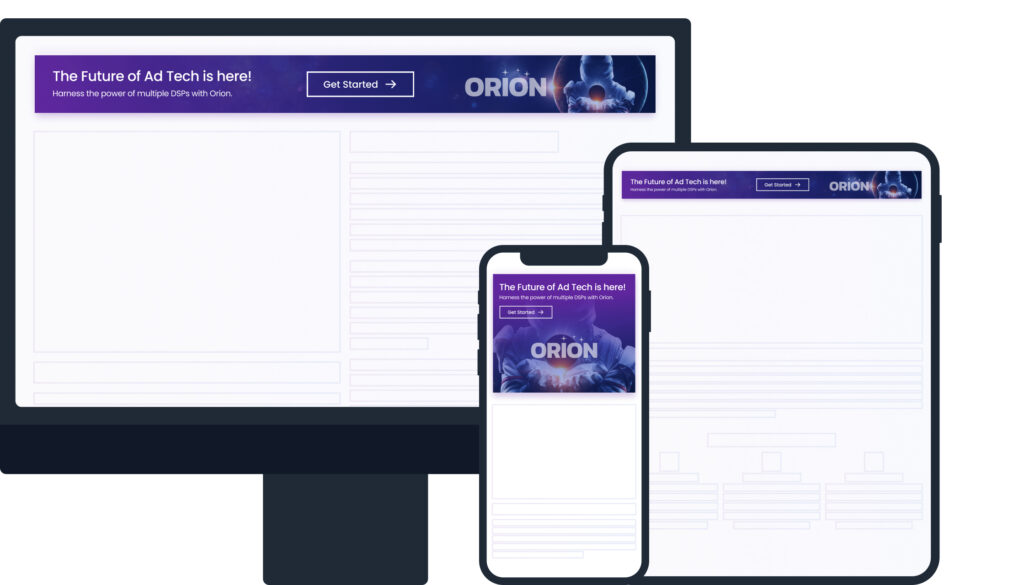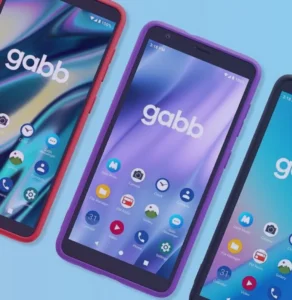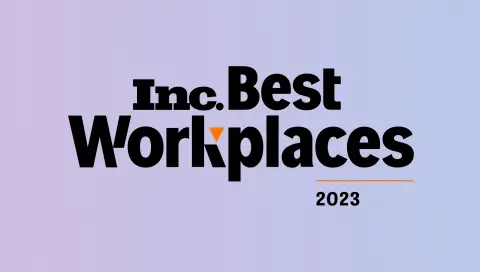Photo by bruce mars on Unsplash
Welcome back to CHANNELS, the series where we discuss the best marketing formats available to businesses today, their pros and cons, and how programmatic strategies can amplify those marketing efforts.
Last week we discussed OLV—aka Online Video ads—and how they can be used to drive conversions and increase brand perception. If you missed it, read it here. Today, we’re covering Programmatic Display Ads.
Introduction
Programmatic display ads amp up classic display ads into a new type of powerful, able to reach the right person, at the right time, at the right price. Programmatic display ads put your brand front and center.
What are display ads?
Display ads are visual ads that appear on websites, apps, and social media platforms across the open internet—basically any ad type except audio-only and paid search. Display ads can be static or dynamic and contain photos, graphics, text, video, and audio.
What is programmatic advertising?
Programmatic advertising refers to a buying process for advertisements on the internet. When buying programmatically, an almost-instantaneous auction is run each time someone visits a webpage to determine the best ad to serve them. This is called Real-Time Bidding (RTB).
The software platforms that run these auctions are called Demand-Side Platforms, which use your ideal audience, budget, and literal billions of other data points to find the best viewer for your ad, at the price point you select.
Programmatic advertising initially began as a way to sell inventory that wasn’t otherwise being utilized, but with the technology’s development, utilizing advanced machine learning and giving access to in-depth analytics, it’s now being used by many advertisers. In 2022, 90.2% of display inventory was purchased programmatically. In 2024, there’s a $168 billion projected spend on programmatic display in the advertising industry.
So, programmatic display ads are just that—display ads that are purchased through a DSP.

What are the benefits of programmatic display ads?
Buying manually through a specific publisher has its benefits, but programmatic advertising can provide greater scalability and better results to advertisers, especially for running lots of display ads. Check out some of the benefits below:
So many targeting options
When you use a DSP, you gain access to hundreds of preset and custom targeting options, including first-and-third party data, retargeting (if someone has already taken an action with your brand), demographic, behavioral, contextual, and more. Here are some examples of the types of data that is available to advertisers for targeting:
- Operating system
- Age
- ZIP code
- Keyword search
- Weather triggered
- Job title
Save time and resources with automation
By leaving the buying process up to a hyper-intelligent computer, you can set up your campaign and sit back. This can free up time for the creative part of marketing, like thinking up new campaign ideas or graphics that will resonate with your target audience.
When you use a software product like our proprietary platform ORION, which gives you access to the top DSPs, you can set up your first campaign in as short as 10 minutes and our team provides support as needed.
Access to multiple ad exchanges and networks
Buying programmatically lets you access a greater share of the advertising industry, including more access to inventory, rather than working with a single publisher.
Maximize revenue
When you purchase programmatic display ads through a DSP, you first select the audience that you want to reach based on a variety of factors, and then you select the budget that you would like to spend per impression.
When the auction is being run, the DSP will only purchase based on this budget. This allows you to reach the most likely audience at the best price point. At Version2, we have been able to see many of our clients reach a 9:1 return on ad spend.
Scalable
Programmatic advertising allows you to reach many different audiences on many different websites, because it doesn’t require you to set up a contract with a publisher. The platform determines the buyers at the specified price point, meaning you can reach many more sites than with just a manual contract.
Cross-device strategy options
Consumers today require somewhere from 7-50 touch points with your brand before a conversion is made. (All marketing companies say something different, but the point is, it’s quite a few).
Because of the inundation of choice, marketing strategies are shifting to become about influence and exposure over time, rather than a direct line from awareness to consideration to conversion.
Serving relevant ads to potential customers on multiple devices can serve this goal of repeat exposure to build trust and eventually, convert.
Programmatic display ads are perfect for this cross-device strategy. For example, younger consumers such as in Gen Z, a powerful consumer group, often look to their brands to share similar aesthetics and values, and don’t follow that traditional marketing funnel.
With the correct messaging and graphics, you can build trust with your audience through programmatic display ads, where they are browsing or researching their next purchase, whether on laptop or smartphone.
What are the types of display ads?
These are the most common Google Display ad sizes:
- 250 x 250 – Square
- 200 x 200 – Small square
- 468 x 60 – Banner
- 728 x 90 – Leaderboard
- 300 x 250 – Inline rectangle
- 336 x 280 – Large rectangle
- 120 x 600 – Skyscraper
- 160 x 600 – Wide skyscraper
- 300 x 600 – Half-Page ad
- 970 x 90 – Large leaderboard
What are the KPIs of programmatic display ads?
Impressions: How many total times was the ad served, including multiple times to the same person
Click-through rate: The rate at which viewers clicked on the ad
Cost per thousand (CPM): The total cost of campaign, divided by total number of impressions, times 1000
Reach: The number of unique viewers reached
Increase in Awareness: Shows if more people know about your brand; can be measured by survey
Increase in Consideration: More people visiting your site or adding things to their carts
Conversions: How many people took the desired action, like made a call, purchased the product, or visited a store
Return on Ad Spend (ROAS): The revenue of campaign divided by total spend
How do I buy programmatic display ads?
There are several types of programmatic ad deals. We have talked about real-time bidding throughout this article, which is an open auction that can occur between any publisher and advertiser who is using an ad exchange. However, there are several other types of methods to purchase programmatic display ads:
Through a DSP / Real-Time Bidding (RTB)
You can buy programmatic display ads through a Demand Side Platform, like The Trade Desk or Google’s DV360, which use real-time bidding to run their auctions across the open web. However, because of the amount that these companies have spent on their tech, buying from one of these platforms requires a minimum spend that is often only feasible for the largest corporations.
Programmatic Direct
Programmatic Direct is where you purchase guaranteed impressions for specific websites directly from the publisher. Though this sounds entirely manual, it does occur within a programmatic platform. Programmatic Direct can give you more control over when and where your ads run, but is much less scalable than Real Time Bidding.
Private Marketplaces (PMPs)
Private Marketplaces are invite-only auctions that sell premium inventory to invited advertisers. With PMP programmatic deals, publishers sell their inventory to trusted brands, and brands get to show their ads on brand-safe, quality content. However, this process is also less scalable than RTB, because there may be fewer ad units available.
Through Version2’s ORION, your all-in-one Adtech Platform
When buying through our proprietary platform ORION, you will be using Real Time Bidding auctions to reach a wide audience with the power of data. ORION allows for cross-DSP campaign creation, analytics, and always-on support, with access to these top 6 industry leading DSPs at no minimum spend:
When working with Version2, you also gain access to our network of Supply Side Platforms, our Private Marketplaces, and premium publishers. Buying programmatic display has never been easier, or more successful.
Launch your first campaign in minutes, receive in depth, white labeled analytics, and optimize your campaign throughout. We have been able to achieve a 9:1 ROAS for many of our clients through programmatic advertising. To see what kind of results we could help you achieve, schedule a demo with our team today.









